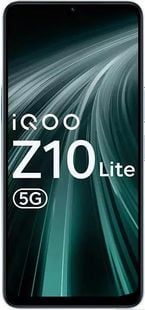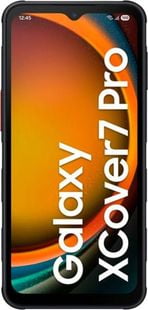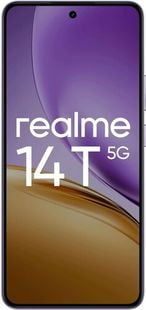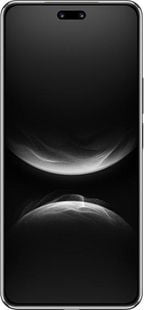Xiaomi Redmi Note 14 Pro Plus 5G vs Samsung Galaxy A56 5G
Here we compared two mid-range smartphones: the 6.67-inch Xiaomi Redmi Note 14 Pro Plus 5G (with Qualcomm Snapdragon 7s Gen 3) that was released on September 26, 2024, against the Samsung Galaxy A56 5G, which is powered by Exynos 1580 and came out 6 months after. On this page, you will find tests, full specs, strengths, and weaknesses of each of the devices.
Key differences
Reasons to consider the Xiaomi Redmi Note 14 Pro Plus 5G
- Newer Bluetooth version (v5.4)
- Supports higher wattage charging (120W versus 45W)
- Waterproof body (IP68 classification)
- 16% higher pixel density (446 vs 385 PPI)
- Has a built-in infrared port
Reasons to consider the Samsung Galaxy A56 5G
- Uses a faster type of memory: LPDDR5 3200 MHz
- 21% better performance in AnTuTu Benchmark (907K versus 750K)
- More recent OS version: Android 15 versus 14
- The phone is 6 months newer
- Faster storage type - UFS 3.1 versus UFS 2.2
- 17% faster in single-core GeekBench 6 test: 1364 and 1161 points
- The front-facing camera can record video at 4K
Review
Display
Screen quality, color accuracy, brightness
Camera
Photo and video recording quality
Performance
CPU and memory performance (apps, system)
Gaming
Capabilities for playing modern games
Battery
Battery life, charging type and speed
Connectivity
Networks, ports, data transmission
Scores with a red asterisk (*) are approximate and may change in the future as we gather more data.
Choose the importance of each parameter to more accurately identify the smartphone that best meets your particular needs.
Tests and specifications
Comparison table of technical specifications and testsDisplay
| Type | AMOLED | Super AMOLED |
| Size | 6.67 inches | 6.7 inches |
| Resolution | 1220 x 2712 pixels | 1080 x 2340 pixels |
| Aspect ratio | 20:9 | 19.5:9 |
| PPI | 446 ppi | 385 ppi |
| Refresh rate | 120 Hz | 120 Hz |
| Adaptive refresh rate | Yes (60-120 Hz) | Yes |
| Max rated brightness | - | 1200 nits |
| Max rated brightness in HDR | 3000 nits | 1900 nits |
| HDR support | Yes, Dolby Vision | Yes, HDR10+ |
| Touch sampling rate | 480 Hz | - |
| Screen protection | Gorilla Glass Victus 2 | Gorilla Glass Victus Plus |
| Screen-to-body ratio | 88.5% | 87.6% |
| Display features | - DCI-P3 - Always-On Display - DC Dimming | - DCI-P3 - Always-On Display |
| RGB color space | 99.1% | - |
| PWM | 120 Hz | - |
| Response time | 1 ms | - |
| Contrast | ∞ Infinity | - |
Peak brightness test (auto)
Design and build
| Height | 162.53 mm (6.4 inches) | 162.2 mm (6.39 inches) |
| Width | 74.67 mm (2.94 inches) | 77.5 mm (3.05 inches) |
| Thickness | 8.8 mm (0.35 inches) | 7.4 mm (0.29 inches) |
| Weight | 205 g (7.23 oz) | 198 g (6.98 oz) |
| Waterproof | IP68 | IP67 |
| Advanced cooling | Vapor chamber | Vapor chamber |
| Rear material | Glass | Glass |
| Frame material | Metal | Metal |
| Colors | Black, Green, Purple | Black, Gray, Green, Pink |
| Fingerprint scanner | Yes, in-display | Yes, in-display |
Screen-to-body ratio
Performance
| Chipset | Qualcomm Snapdragon 7s Gen 3 | Samsung Exynos 1580 |
| Max clock | 2500 MHz | 2900 MHz |
| CPU cores | 8 (1 + 3 + 4) | 8 (1 + 3 + 4) |
| Architecture | - 4 cores at 1.8 GHz: Kryo Silver (Cortex-A520) - 3 cores at 2.4 GHz: Kryo Gold (Cortex-A720) - 1 core at 2.5 GHz: Kryo Prime (Cortex-A720) | - 4 cores at 1.95 GHz: Cortex-A520 - 3 cores at 2.6 GHz: Cortex-A720 - 1 core at 2.9 GHz: Cortex-A720 |
| Manufacturing | TSMC | Samsung |
| Lithography process | 4 nanometers | 4 nanometers |
| Neural processor (NPU) | Yes | Yes |
| Graphics | Adreno 810 | Samsung Xclipse 540 |
| GPU shading units | 256 | 256 |
| GPU clock | 1050 MHz | - |
| FLOPS | ~537.6 GFLOPS | - |
Benchmarks
Geekbench 6 (Single-Core)
Geekbench 6 (Multi-Core)
| Geekbench Compute (GPU) | 3327 | 6816 |
| Single-core score | 1161 | 1364 |
| Multi-core score | 3104 | 3899 |
AnTuTu Benchmark 10
| CPU | 272657 | 294836 |
| GPU | 191996 | 259232 |
| Memory | 138806 | 158241 |
| UX | 146907 | 195299 |
| Total score | 750366 | 907608 |
| Samples | [3 tests] | [4 tests] |
Memory
| RAM size | 8, 12 GB | 8, 12 GB |
| Memory type | LPDDR4X | LPDDR5 |
| Memory clock | 3200 MHz | 3200 MHz |
| Channels | 4 | 4 |
| Storage size | 256, 512 GB | 128, 256 GB |
| Storage type | UFS 2.2 | UFS 3.1 |
| Memory card | No | No |
Software
| Operating system | Android 14 | Android 15 |
| ROM | HyperOS 1.0 | One UI 7.0 |
| OS size | 32 GB | 21.5 GB |
Battery
| Capacity | 5110 mAh | 5000 mAh |
| Max charge power | 120 W | 45 W |
| Battery type | Li-Po | Li-Ion |
| Replaceable | No | No |
| Wireless charging | No | No |
| Fast charging | Yes | Yes (65% in 30 min) |
| Full charging time | - | 1:13 hr |
| Web browsing | 10:26 hr | 09:40 hr |
| Watching video | 13:31 hr | 14:19 hr |
| Gaming | 05:43 hr | 04:57 hr |
| Standby | 102 hr | 118 hr |
General battery life
Main camera
| Matrix | 200 megapixels | 50 megapixels |
| Image resolution | 16320 x 12240 | - |
| Zoom | Digital | Digital |
| Flash | LED | LED |
| Stabilization | Optical | Optical |
| 8K video recording | No | No |
| 4K video recording | Up to 30FPS | Up to 30FPS |
| 1080p video recording | Up to 60FPS | Up to 60FPS |
| Slow motion | 240 FPS (720p) | 240 FPS (720p) |
| Angle of widest lens | 120° | 123° |
| Lenses | 1) Standard: 200 MP 2) Ultrawide: 8 MP 3) Macro: 2 MP | 1) Standard: 50 MP 2) Ultrawide: 12 MP 3) Macro: 5 MP |
| Camera features | - Bokeh mode - Pro mode | - Bokeh mode - Pro mode |
| Image resolution | 200 MP | 50 MP |
| Aperture | f/1.7 | f/1.8 |
| Focal length | 23 mm | - |
| Sensor | Samsung S5KHP3 | Sony IMX906 |
| Sensor size | 1/1.4" | 1/1.56" |
| Pixel size | 0.56 micron | 1 micron |
| Autofocus | Phase autofocus | Phase autofocus |
| Stabilization | Optical | Optical |
| Image resolution | 8 MP | 12 MP |
| Aperture | f/2.2 | f/2.2 |
| Focal length | 15 mm | - |
| Sensor | Sony IMX355 | - |
| Sensor size | 1/4.0" | 1/3.06" |
| Pixel size | 1.12 micron | 1.12 micron |
| Stabilization | Digital | Digital |
| Image resolution | 2 MP | 5 MP |
| Aperture | f/2.4 | f/2.4 |
| Sensor | Omnivision OV02B10 | - |
| Sensor size | 1/5" | - |
| Pixel size | 1.75 micron | - |
| Stabilization | - | Digital |
Selfie camera
| Megapixels | 20 megapixels | 12 megapixels |
| Aperture | f/2.2 | f/2.2 |
| Focal length | 21 mm | - |
| Sensor | Omnivision OV20B | - |
| Sensor size | 1/4.0" | - |
| Pixel size | 0.7 micron | - |
| Autofocus | No | No |
| Stabilization | Digital | Digital |
| Video resolution | 1080p (Full HD) at 60 FPS | 2160p (4K) at 30 FPS |
| Depth sensor (TOF 3D) | No | No |
Connectivity
| Wi-Fi standard | Wi-Fi 6E (802.11 a/b/g/n/ac/ax) | Wi-Fi 6 (802.11 a/b/g/n/ac/ax) |
| Wi-Fi features | - Dual Band - Wi-Fi MiMO - Wi-Fi Direct - Wi-Fi Hotspot - Wi-Fi Display | - Dual Band - Wi-Fi MiMO - Wi-Fi Direct - Wi-Fi Hotspot - Wi-Fi Display |
| Bluetooth version | 5.4 | 5.3 |
| Bluetooth features | LE | LE |
| USB type | USB Type-C | USB Type-C |
| USB version | 2 | 2 |
| USB features | - Charging - USB-Storage mode - OTG | - Charging - USB-Storage mode - OTG |
| DisplayPort | No | No |
| GPS | GPS, GLONASS, Beidou, Galileo, QZSS | GPS, GLONASS, Beidou, Galileo, QZSS |
| NFC* | Yes | Yes |
| Infrared port | Yes | No |
| Number of SIM* | 2 | 2 |
| Type of SIM card | Nano | Nano |
| Multi SIM mode | Standby | Standby |
| eSIM support* | Yes | Yes |
| Hybrid slot | No | No |
| 5G support | Yes | Yes |
Sound
| Speakers | Stereo | Stereo |
| Headphone audio jack | No | No |
| FM radio | - | No |
| Dolby Atmos | Yes | Yes |
Speakers test
Max loudness
Other
| Category | Mid-range | Mid-range |
| Announced | September 2024 | March 2025 |
| Release date | January 2025 | March 2025 |
| Launch price | $449 | $499 |
| Configurations | - 8 / 256 GB - 12 / 256 GB - 12 / 512 GB - 16 / 512 GB | - 8 / 128 GB - 8 / 256 GB - 12 / 256 GB |
| SAR (head) | - | 0.61 W/kg |
| SAR (body) | - | 1.05 W/kg |
| Sensors | - Proximity sensor - Gyroscope - Accelerometer - Ambient light sensor - Compass - Fingerprint | - Gyroscope - Accelerometer - Ambient light sensor - Compass - Fingerprint |
| Bundled charger | Yes, 120 W | Not included |
Further details
Notes on Redmi Note 14 Pro Plus 5G:
- The black and blue models (glass back) are 8.75 mm thick and weigh 210.14g, while the purple model (eco-leather) is 8.85 mm and 205.13g.
*Disclaimer! NFC, GSM network support, and some other specs can be different depending on the country.






